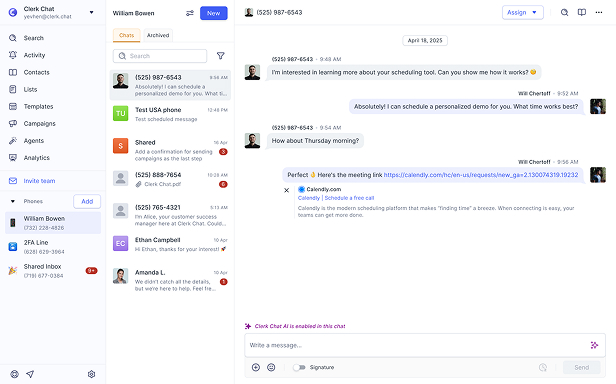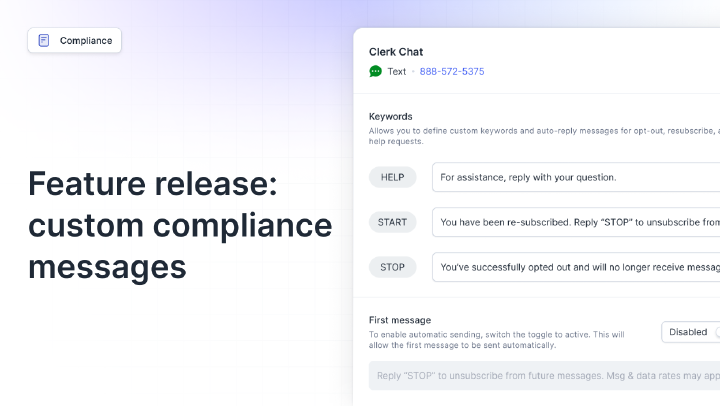Drip Campaign
[drɪp kæmˈpeɪn]A Drip Campaign is a marketing tactic that delivers a series of automated messages over time, triggered by user actions or schedules.
It nurtures leads by providing consistent, relevant information to guide them toward decisions. Applicable in email or SMS, it maintains engagement without overwhelming recipients.
Why Drip Campaign Matters
Drip Campaigns sustain connections with prospects, delivering value at optimal moments to influence buying journeys positively.
They automate nurturing, saving time while increasing conversion rates through personalized touches that build rapport. In competitive fields, this strategy differentiates brands by addressing pain points sequentially, leading to higher loyalty and revenue.
They also generate actionable data on preferences, enabling refined targeting and product adjustments.
For customer retention, post-purchase drips encourage repeat business, with studies showing 3x engagement over one-off sends. Overall, Drip Campaigns contribute to efficient scaling, reducing acquisition costs by 33% in some cases, making them vital for growth-oriented communications.
How Drip Campaign Works
Drip Campaigns operate via automation platforms that sequence messages based on predefined logic.
Audience Segmentation: Divide contacts into groups by demographics, behaviors, or stages to ensure relevance.
Trigger Identification: Set entry points like subscriptions, downloads, or inactivity to start the sequence.
Content Creation: Develop a series of messages, each building on the last, with educational, promotional, or reminder elements.
Timing and Scheduling: Define intervals, such as daily or weekly, considering optimal send times to maximize opens.
Automation Setup: Integrate with tools to handle delivery, tracking responses or actions for branching paths.
Monitoring and Adjustment: Track performance metrics post-launch, tweaking based on data to improve efficacy.
Exit Conditions: Establish endpoints, like conversions or opt-outs, to conclude the campaign gracefully.
In texting contexts, a Drip Campaign might begin with a welcome SMS after opt-in, followed by tips and offers, using short codes for quick responses. This method supports two-way interactions, enhancing personalization through replies.
Best Practices with Drip Campaign
Map Detailed Customer Journeys: Outline stages from awareness to advocacy to align messages with needs at each point.
Personalize Content Extensively: Incorporate names, past interactions, or preferences to make messages feel custom, boosting opens.
Balance Frequency Carefully: Space sends to avoid overload, starting with 3-5 messages over weeks.
Incorporate Clear Calls-to-Action: Guide recipients with specific next steps in each message to drive progress.
Test Variations Rigorously: Run A/B splits on elements like timing or copy to optimize based on data.
Ensure Mobile Optimization: Format for small screens, especially in SMS, with concise text and functional links.
Comply with Regulations Strictly: Obtain consents and provide opt-outs to maintain trust and legality.
Real world examples
- Real Estate
Agents nurture leads with property updates, increasing showings by 20%.
Read more - Nonprofits
Organizations send donor stories, boosting contributions by 25%.
Read more
Common misconceptions
They apply to various channels like SMS, social media, and push notifications for broader reach.
Automation tools handle scheduling and triggers, making them efficient once set up.
Well-designed ones space content appropriately, focusing on value to avoid fatigue.
They build relationships gradually, with impacts seen over weeks or months.
Small operations benefit too, with scalable tools available at low costs.
Related terms
In this article:
Ready to use your business number for text messaging?
Thousands of businesses are already experiencing the power of conversational messaging through SMS. Join us. Free trial and paid tiers available.
Get StartedFAQ
Have questions? We've got answers.
Find what you need quickly and clearly with our most frequently asked questions.
A Drip Campaign involves sending automated, timed messages to audiences based on actions or schedules. Its purpose is to nurture leads through the sales funnel, providing value at each stage to encourage conversions. In messaging, it achieves high engagement with open rates over 90%, building trust and relevance without manual effort.
Map customer journeys to identify triggers like sign-ups or abandoned carts. Create content sequences, set timing, and integrate with automation platforms. Test flows for effectiveness. Tools like Clerk Chat enable SMS-based Drip Campaigns, automating texts with templates and variables for seamless setup.
Platform fees range from $10-100/month for basics, plus per-message costs at $0.005-0.01. Assets include content creation time (hours to days) and audience data. Returns come from higher conversions, often 2-3x email benchmarks, justifying investments through sustained engagement.
Blasts send one-off messages to all; Drip Campaigns deliver sequenced, personalized content triggered by behaviors. Newsletters inform periodically, while drips nurture specifically. This targeted approach yields better results, with drips seeing 80% higher opens than blasts.
Secure opt-in consent per TCPA for SMS and CAN-SPAM for emails. Include opt-outs in every message. Comply with GDPR for data handling if applicable. Track permissions to avoid fines up to $1,500 per violation; automation tools assist with consent management.
Segment audiences for tailored content. Time messages based on behavior analysis. Use A/B testing for subjects and copy. Monitor metrics like opens and clicks to refine. Incorporate personalization to increase relevance, potentially lifting conversions by 20-30%.




